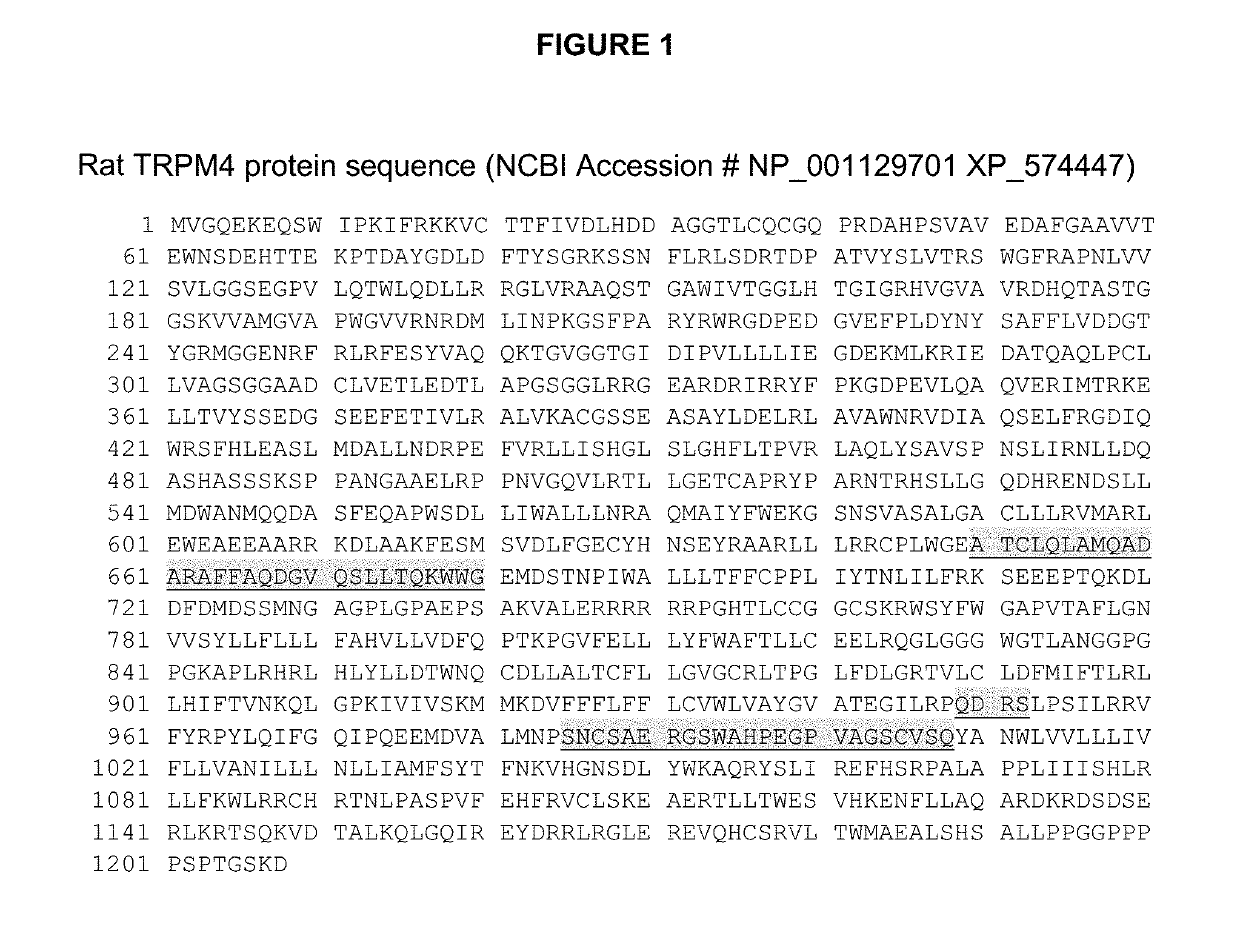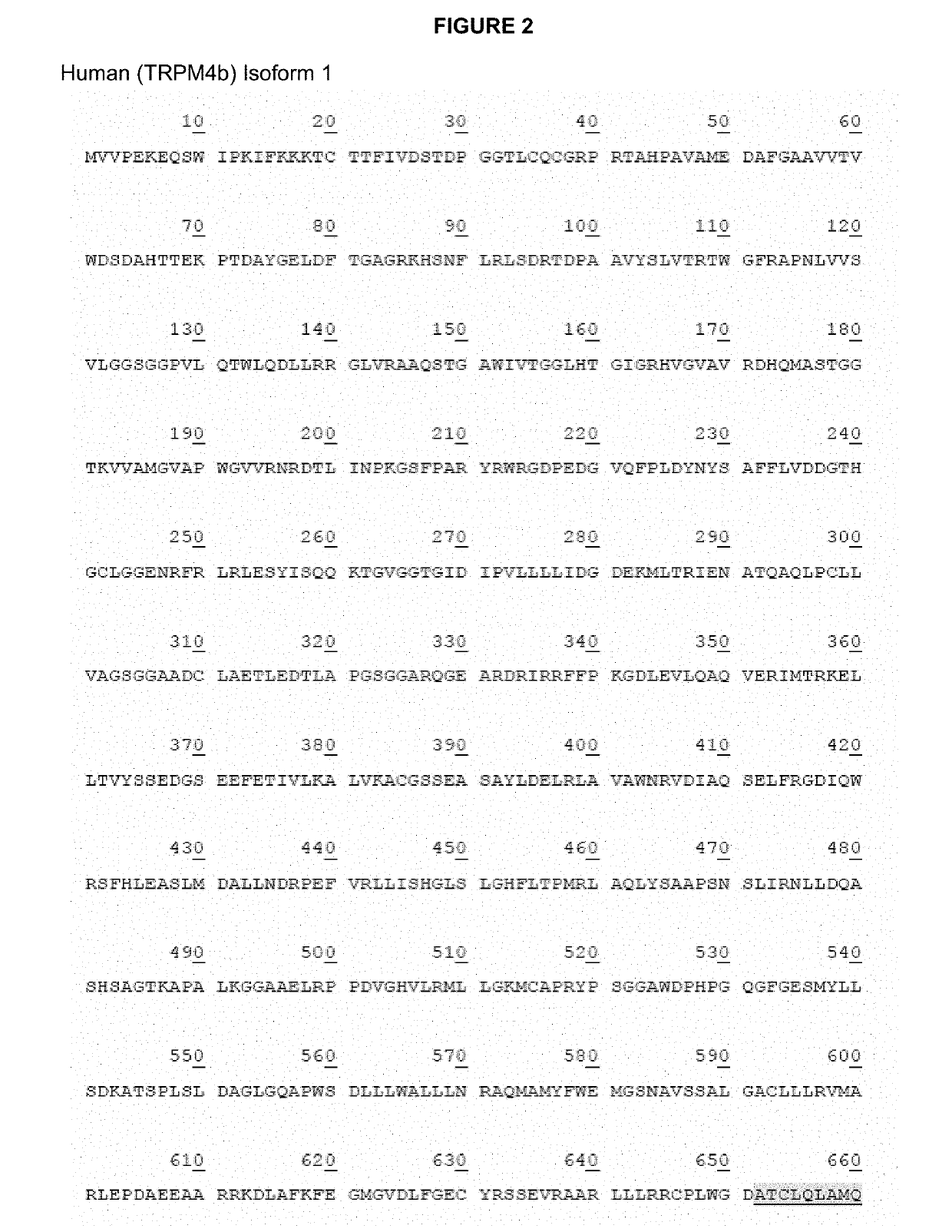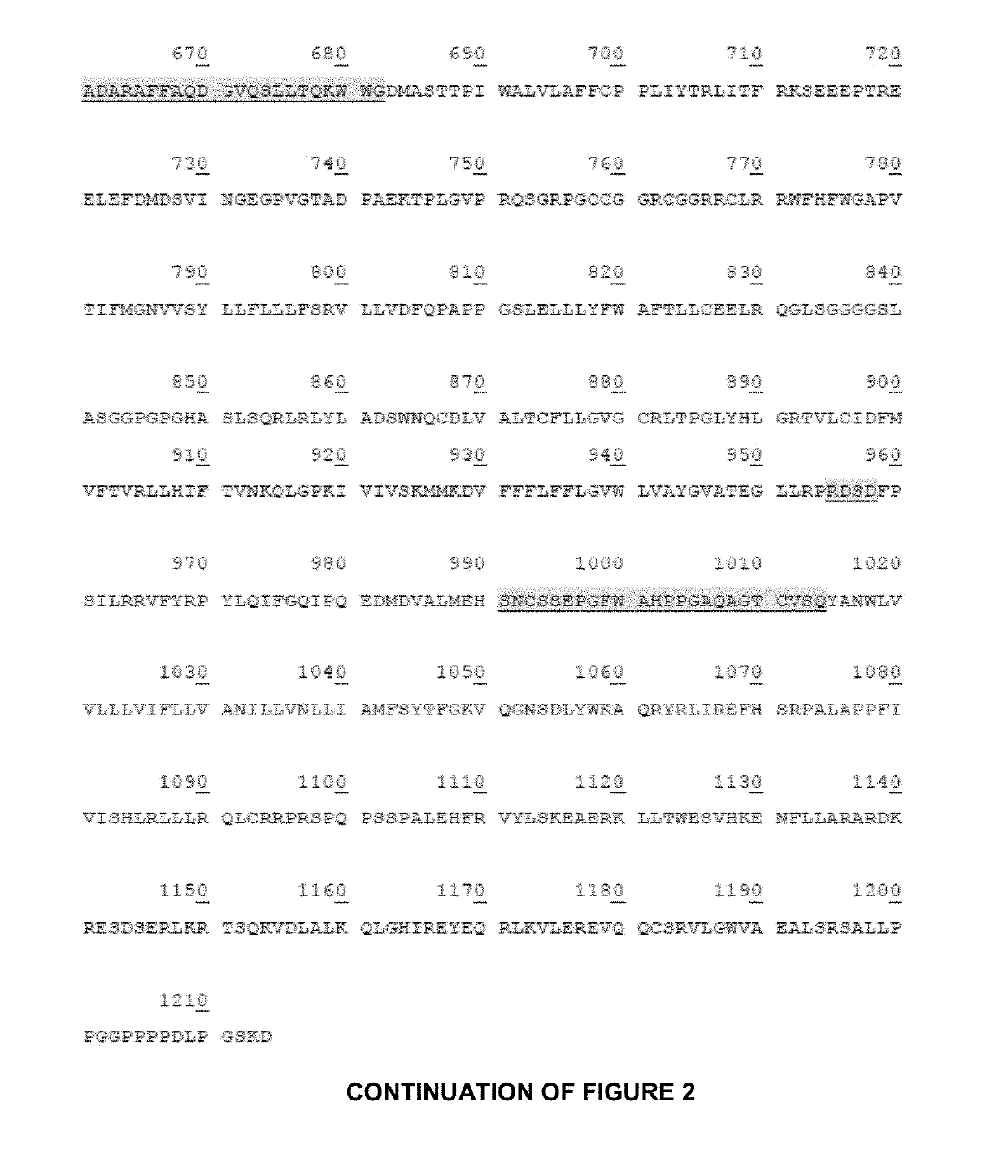Trpm4 channel inhibitors for stroke treatment
a stroke and channel inhibitor technology, applied in the field of stroke treatment, can solve the problems of increasing the risk of stroke, the inability of most people to be fully functional, and the need for significant rehabilitation, so as to prolong the therapeutic time window for reperfusion, reduce the volume of infarcts, and increase the angiogenesis of subjects
- Summary
- Abstract
- Description
- Claims
- Application Information
AI Technical Summary
Benefits of technology
Problems solved by technology
Method used
Image
Examples
examples
[0120]Standard molecular biology techniques known in the art and not specifically described were generally followed as described in Sambrook and Russell, Molecular Cloning: A Laboratory Manual, Cold Springs Harbor Laboratory, New York (2001).
Materials and Methods
[0121]This study was approved and performed in accordance with the guidelines of the Institutional Animal Care and Use Committee of the National Neuroscience Institute, Singapore. As per the approved protocol, male Wistar rats weighing approximately 300 g were subjected to permanent or transient middle cerebral artery occlusion (MCAO). Prior to surgery, the animals were anesthetized with ketamine (75 mg / kg) and xylazine (10 mg / kg) intra-peritoneally. Under an operating microscope, the left common carotid artery was exposed and temporarily ligated using a vascular clip (Aesculap, B. Braun, Germany). Next, the left external carotid artery (ECA) and internal carotid artery (ICA) were dissected from the surrounding t...
PUM
| Property | Measurement | Unit |
|---|---|---|
| time | aaaaa | aaaaa |
| concentration | aaaaa | aaaaa |
| thickness | aaaaa | aaaaa |
Abstract
Description
Claims
Application Information
 Login to View More
Login to View More - R&D
- Intellectual Property
- Life Sciences
- Materials
- Tech Scout
- Unparalleled Data Quality
- Higher Quality Content
- 60% Fewer Hallucinations
Browse by: Latest US Patents, China's latest patents, Technical Efficacy Thesaurus, Application Domain, Technology Topic, Popular Technical Reports.
© 2025 PatSnap. All rights reserved.Legal|Privacy policy|Modern Slavery Act Transparency Statement|Sitemap|About US| Contact US: help@patsnap.com



